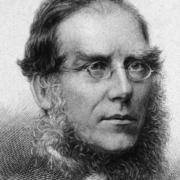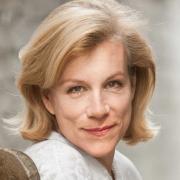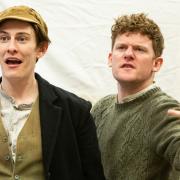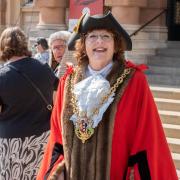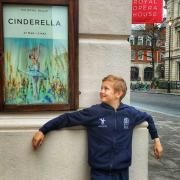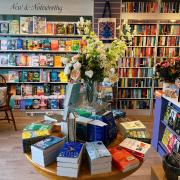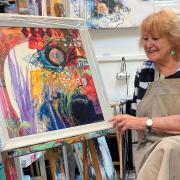Bell ringers across Suffolk are eagerly looking forward to ringing for the Coronation of Charles III. Marion Welham meets some of them
Handstroke, backstroke, sally, plain hunt, bob. What does it all mean? Even with many hours of teaching you're unlikely to learn the more than 600 words and phrases you might hear in the ringing tower.
The Ring for the King campaign has certainly raised awareness of bell-ringing in Suffolk but, one thing’s for sure, full-circle bell ringing is harder than it looks. Not everyone follows up when they realise there’s a bit more to it than turning up on May 6 and pulling a rope. But plenty are keen to learn, and that means experienced and committed teachers are in high demand.
'It’s really unusual and exciting to have lots of learners, but that brings its own challenges as it takes 10-20 hours one-on-one to get someone self-proficient, so it’s a huge investment teaching someone to ring,' says Katharine Salter, Ringing Master at the Suffolk Guild of Ringers.

Katharine, who is tower captain at the Ipswich churches of St Clement and St Lawrence, has been ringing for over 40 years and knows a thing or two about learning. 'There’s essentially two things. There’s the physical skill of actually ringing the bell, and then the patterns which we ring which are all based on maths.' Not surprisingly, that last word is enough to put some people, including me, off for life. But many relish the challenge of learning to ring the largest and loudest instruments in the world.

One is Fiona Smith, of Woodbridge, who has been learning the ropes in Ipswich since responding to Ring for the King last November. As a child she had watched her grandfather ring at Grundisburgh church so the campaign prompted her to find out more. She was invited to St Mary le Tower to watch a practice session, be introduced to her teacher, and has now rung at St Clement, St Lawrence and St Margaret as well.
'I think I’ve progressed quite well, although sometimes it feels like two steps forward and one step back. There is so much to learn from all the terminology and the mechanics of how the bells work so you understand what’s happening when you pull that rope. Ringers make it look so easy but it really isn’t.' Having been told it’s like learning to ride a bike and that eventually it will come naturally, Fiona thinks, after six months, she’s now at the level of being able to take her stabilisers off. 'It’s starting to feel more normal,' she says.

At Bacton St Mary tower, I caught up with Ricky and Carol Paterson, of Battisford, who started ringing after the Queen’s Platinum Jubilee because they wanted to do something together as a couple after the gloom of lockdown. Ricky says he can now ring some of the changes, but Carol laughs that she struggles just to tie the knot, though teacher Jo Beever says she’s improving.
The Patersons are among eight who responded to a recruitment drive at Stowmarket where teachers’ mentor and north-west district ringing master Maureen Gardiner is leading a £175,000 restoration project for an eventual ring of 10 bells. With Covid hold-ups at the bellhangers, Stowmarket bells will sadly miss ringing for the Coronation by about a month and the new recruits are going from tower to tower to learn and practise until the new bells arrive.
Jo, a ringer since 1978, is heading up the training and teaching for Stowmarket and has a jolly story of the opportunities opened up by ringing. A highlight for her was ringing at St Paul’s Cathedral seven years ago and she’s also been on ringing holidays to America and Australia. 'I’ve rung in St Basil’s Cathedral in Sydney. I rang at St Philip’s that day too. I could hear them from the hotel window. A friend I was with had gone to church so I left her a note saying I had gone ringing and would be back later.'
Change ringing, described by Handel as, 'the sound of England' means the bells have to change places, not simply be rung in order 1-2-3 down the scale. Then you have the tunes known as 'methods', for which you must learn different patterns off by heart from a diagram that’s undecipherable to the rest of us. So when the conductor calls out something like 'Go Plain Bob Minor!' that’s the cue to start ringing the method of that name.

It's the kind of challenge that 16-year-old Harriet Aves relishes. Here at Old Newton St Mary, she’s ringing with her colleague Isla Sutton, 14, under the close eye of tower captain Peter Godden. Both have been ringing for five years and say it’s fun learning new patterns. 'I mean, it’s very skilful,' says Isla. 'Once you start doing it, it’s a really cool skill to have.' Harriet says the best part is going to different churches and having people in the community talking about bell ringing.
'It’s in danger of dying out and needs to come back,' she says. 'Sometimes you’ll go to churches where bells have been newly restored and it’s nice just to know about the history as well.' Ringing for the Coronation will be a big moment for both of them. 'I just know I’ve got to be here for that,' says Isla.
When the big day comes, says Maureen, 'it will be as simple as possible to involve as many people as we can. But there will be peal ringing going on all over the place and of course there’s bound to be a method I haven’t thought of, called something like King Charles Surprise Major. Meanwhile, Jo is busy scrolling through various methods on her phone. 'Coronation Delight,' she declares. 'Oh yes, that will be rung all over the place,' says Maureen, explaining that Delight is a technical term which distinguishes it from Surprise. And there was me thinking it was a rather delectable pudding. 'Oh and here’s Coronation Surprise,' says Jo.
'So it’s Coronation Delight Minor and Coronation Surprise Major, Minor being on six bells and Major being on eight,' Maureen explains. 'Oh good heavens,' says Jo, scanning through Coronation Surprise. 'Too many dodges and not enough places.' Now they’ve lost me.
The excitement is building, especially as this also happens to be the centenary year for the Suffolk Guild of Ringers. 'We’ll find ourselves in more than one church that day,' says Jo. 'We’ll probably do about half a dozen. We’re better off round here than in a lot of places.' In fact there are 2,112 church bells in Suffolk, with 17 per cent cast before 1600, more than any other county, according to the guild’s PR officer Neal Dodge, who rings with the Bardwell team.
'Basically every tower that can ring will be ringing at some point around the coronation,' he says. 'It'll be a mixture of peals (the ringing equivalent of a marathon), quarter peals and general ringing. A lot of ringers will make a day of it as a social event and that's what we're planning to do. They'll be a group of about 15 of us going around 10-plus towers and we may go for a group meal afterwards. It’s all part of the important, social side of ringing.'
Bardwell tower captain Ruth Suggett is editor of Tower Talk, a newsletter aimed at new ringers. She says Ring for the King has definitely raised the profile of ringing. 'It’s given everybody a focus,' she says. 'We plan to ring a peal at Ixworth on the Sunday where the church is on the high street. It makes people feel they are part of something.' At the Norman Tower in Bury St Edmunds, tower captain Joan Garrett says the 12 bells will be rung on Coronation Day. 'Then on Sunday afternoon, there will be a quarter peal to celebrate the Coronation, and the final highlight will be a full peal of 3.5 hours non-stop bellringing on Monday May 8, commencing about 10am.'
East Bergholt has the heaviest ring of five in England, housed in a cage built in 1531 after the downfall of Cardinal Wolsey who was funding the tower. Vice captain Julia Smith said they have two ringers who started just before Covid and one who started late last year. 'We also have two ringers returning after a break, one of whom is my dad, our oldest ringer at 78. My son is our youngest ringer at 24 so we have three generations ringing.'

In this 550th anniversary of Cardinal Wolsey, note that the bells of St Lawrence, Ipswich, the oldest ring of five in the world, are known as Wolsey’s Bells since their sound would have been heard at his birth in 1473. As with the Royals today, family feuds tend to end up in the media. When George IV was crowned in 1821, his wife Caroline was excluded after he had attempted to divorce her the year before. The Bury and Norwich Post duly reported from Eye that 'except from the bells ringing and guns firing, it did not appear like a day of rejoicing: the disappointment that the Queen was not crowned was visible in every face'.
Neal Dodge recently came across a Metfield church warden’s account, revealing that ringers were paid 10 shillings to ring for the coronation of Charles II in 1661, the equivalent of £75 today. For the coronation of George II in 1727, they were paid £1 or £160 in today’s money. It seems that, all over Suffolk, much beer was distributed and many 'excellent dinners' consumed.
Today’s enthusiastic ringers need no financial inducements and, as Ruth Suggett puts it: 'We are custodians of a really great tradition and want to pass it on to make sure it’s there for the future.' That’s why they are going like the clappers to Ring for the King across as many Suffolk towers as possible.




